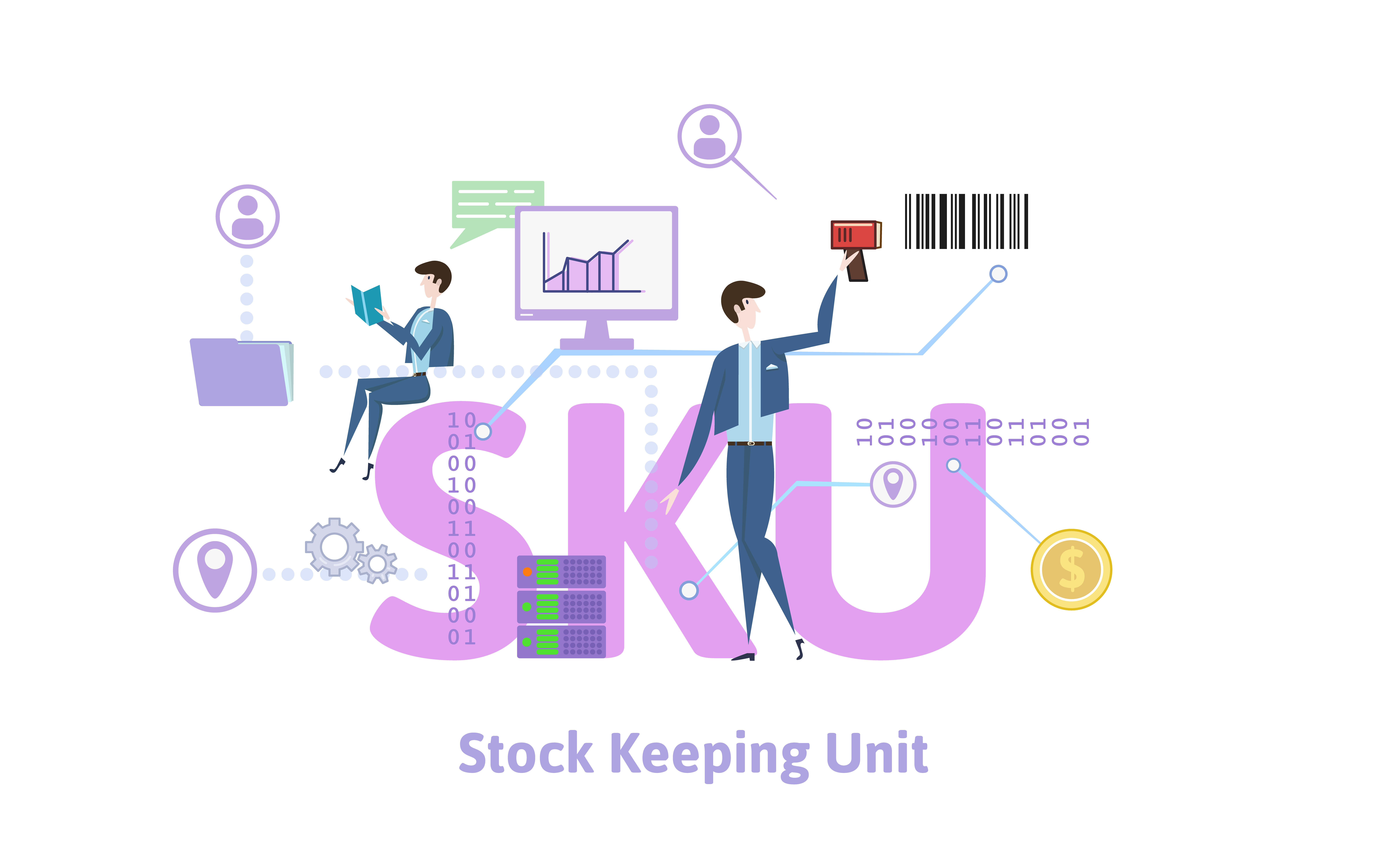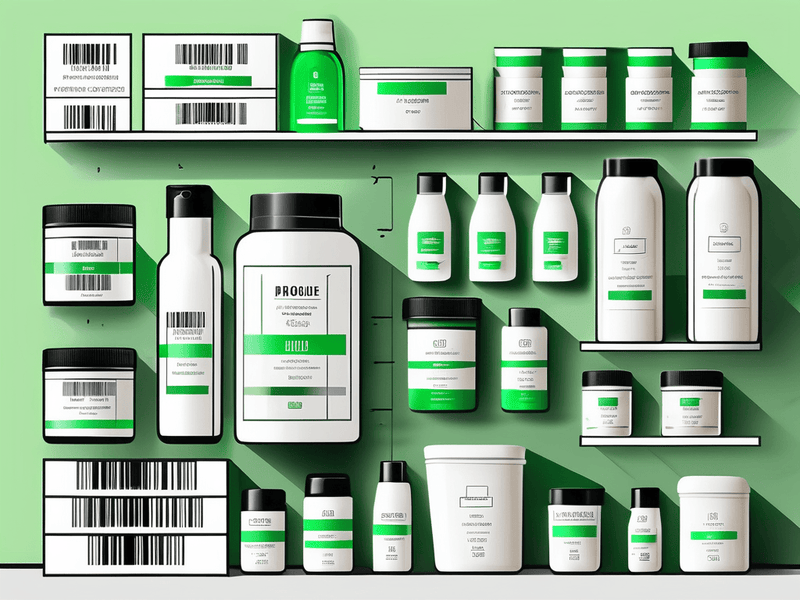Share this
Lot Tracking: Benefits and Best Practices
by Christie McLeod on Sep. 27, 2022

Building upon our in-depth exploration of what lot tracking for ecommerce retailers is, we are now ready to explore lot tracking benefits and best practices. Beyond the fundamental understanding of lot tracking as an inventory management and quality control system, it’s important to learn how it can benefit your ecommerce business, as well as the key practices to optimize its implementation.
This article is a guide to the benefits that effective lot tracking can bring, along with expert recommendations on best practices. Let’s unfold the ways to maximize the potential of lot tracking and propel your ecommerce inventory management to new heights.
What Are The Benefits of Lot Tracking?
Tighter inventory controls
Lot tracking continuously monitors inventory levels and make sure that companies are not running out of stock prematurely. If there is any stock shortage, they can quickly figure out why it happened and take the necessary steps to prevent it from happening again. It also allows them to avoid being overcharged for taxes or duties on imported goods by accurately determining how many units of the product have been sold.
Improves quality assurance
Traceability is a key part of the supply chain, especially when it comes to assuring high-quality standards and decreasing high-cost re-orders. These indicators are important throughout the process because they help managers manage demand forecasts, production orders, order shipments and more. Keeping tabs on your inventory from its origin to its destination includes every step in between. This is essential for factories, suppliers, retailers, and food producers, and it’s also very critical during production and when shipping out a product.
Inventory logistics also includes the complexities of managing expiry, breakage, and supplier issues before they reach their end users. The right lot tracking solution helps with not only managing an inventory but also reducing spoilage, product recalls, and keeping track of the movement of goods globally.
Advanced traceability and improved quality control
Quality control is a vital part of the supply chain management process, and it is imperative that you track your products from the point of manufacture to the end of their journey. Tracking will reveal when a product goes missing, where it’s going, and what’s happening along the way. It will also help companies identify their best practices in manufacturing and their most effective ways to improve efficiency.
Tracking your products through the supply chain ensures quality and prevents any problems on the journey. The most important thing to keep in mind when you are tracking your supply chain is that it needs to be done consistently and, more importantly, at the end of its journey.
Eliminates human error
When it comes to tracking and tracing products, manual processes are rife with human error. It takes time to fix the errors, which could mean lost revenue or product. Lot tracking technology automates the process of tracking and tracing products within the supply chain while also reducing human error naturally.
In the past, quality assurance teams were the only ones who could really ensure that products were being tracked properly. By automating this process to track and trace products throughout their supply chain, companies can increase product quality and reduce overall costs and risks associated with product management without costly workforce reductions.
Improves order accuracy
Traditionally, inventory was managed by manual processes. This meant that companies were forced to keep a watchful eye on every product in their warehouse and to manually order new items when needed. However, with inventory management solutions now managing lot tracking, companies can automate this process. This means that companies can better manage inventory and maintain order accuracy.
Order accuracy is important to both the customers and the company. It can be difficult to maintain order accuracy in some settings, but lot tracking can help with this. Lot tracking systems let you track inventory over time so that you know when to restock items and prevent stockouts.
Lot tracking will help you avoid common mistakes in inventory. It will also allow you to restock quickly and accurately by providing a digital record for every item and allowing for easy access or retrieval of this information at any time.
Reduces thefts and losses
Lot tracking systems extensively use barcoding and RFID technology to label the lots and monitor them across supply chains. They use RFID tags to track the location of items throughout their journey. Lot control systems further prevent theft or unauthorized removal of goods from a facility, while lot tracking systems keep tabs on inventory at various stages of the process. The two are often used together to create an enhanced security system, so to speak.
Compliance
The relationship with inventory management constantly keeps changing. There are now many different technologies that can help you make your inventory management more efficient and less expensive, but none is as effective as lot tracking. The system ensures that your inbound and outbound stock is tracked, authorized, and recorded in full.
Distribution, storage, sales, and supply of regulated goods like food, pharmaceuticals, explosives, and more are subject to stringent rules enforced by regulatory authorities.
Regulations are typically applied to everything from manufacturing to storage to shipping. Non-adherence to any of these regulations can cause crucial delays in the absence of lot tracking. Lot tracking ensures that your inbound and outbound stock is tracked, authorized, and recorded to fully comply with local and state regulations.
Helps with manufacturer rebates
This is perhaps the most criminally overlooked advantage of using a lot tracking system. Manufacturers typically offer rebates on the percentage of the total stock sold or on bulk supplies. Lot tracking helps companies identify the exact number of units they have in their warehouses and how much they are making per unit, which helps them to calculate the manufacturer rebate and take advantage of it.
Efficient and cost-effective product recalls
Product recalls can be a major concern when companies have to do it. When a recall is issued, manufacturers must provide the stored information to help retrieve the stock and replace, refund, and review the distributed batches or lots.
With the increasing number of products on the market, it’s also becoming harder and harder to keep track of what is currently in circulation and what might be recalled. There used to be a lot of manual work that was required with this process, but now with lot tracking systems which use RFID technology, product recalls are much more efficient and low-cost affairs.
Lot tracking can provide compliance information, such as audit trails, which would help in reducing costs for audits and investigations related to product recalls. Companies can scan through records at a much quicker speed, which can lead to significant improvements in the duration it takes to execute and complete product recalls.
Improves reporting
Lot tracking allows for better analysis and prioritization of shipments, as well as more accurate inventory management. By helping companies better understand their supply chains, the system makes their logistics more efficient.
Continuous reporting on goods also increases product visibility in the supply chain. During procurement of raw materials as well as shipping, packages move through multiple checkpoints and routes. Instances of bottlenecks in supply chains are instantly rectified, as are occurrences of wastage and slippages.
Optimizes return processes
Lot tracking systems manages goods from the point of origin to the point of consumption through automated systems like RFID tags, barcodes, or RFID readers. The most common way is through manual lot tracking, which involves checking the inventory and write-ups at regular intervals. It helps in reducing returns-related costs and risks associated with inventory management by following the movement of goods from one place to another.
On the end of the spectrum is avoiding returns. Lot tracking helps companies do this, too. If they find out that there is some issue with the lot they dispatched, they can identify where the product is, and fix it before it gets delivered to the customer.
With lot tracking, they can get specific reports on which batches are being returned from their storage facilities. It will be possible to determine who is responsible for the returns and how many units within each lot were damaged thanks to these reports.
Stay on top of warranties
Lot tracking systems also provide the benefits of improving asset utilization and tracking warranty claims. Because a lot tracking system constantly monitors the journey of the goods from source to destination, it can back up claims about defects in the goods and materials sourced in the absence of mishaps. The manufacture date, the time frame, and the batch number are properly logged, and this information is readily available for companies when they need it.
Optimizes supply chain
Companies can optimize their supply chains with the help of lot tracking system’s advanced reporting and traceability capabilities.
Firstly, lot tracking helps to reduce inventory costs by keeping track of the quantity of goods in stock. Next, it reduces the risk of overstocking and prevents overproduction. It also ensures that goods are delivered on time as they are tracked from point A to point B. And lastly, lot tracking helps improve customer satisfaction by following up on products at each stage of production and delivery. This ultimately leads to fewer returns or complaints.
Not only that, but companies can also find out if they are leaking money at some stage and take corrective measures to plug the leak. For instance, if products are constantly being delivered to the wrong location, this may indicate that they are leaking stock.
What are the best practices in lot tracking?
Lot tracking, when done right, can improve your order fulfillment process by making sure you don’t overstock and have inventory on hand that you’re not selling. Here are four best practices in lot tracking to ensure that:
- Have a centralized system
Lot tracking makes it easier to manage and update inventory if it’s all located on one system. This way, you can easily see if there is any change in your inventory. Tracking can be done manually or automatically.
- Use barcode scanners
The use of barcode scanners helps in reducing paperwork and ensures quicker work in less amount of time. They allow for easy and accurate tracking of inventory and help create a more streamlined workflow. With these scanners, your inventory management system can monitor the movement of items in real-time and reduce your time spent on lot checking.
- Use RFID tags
Tracking the movements of an item, verifying its authenticity, and knowing what happens to it at every point? RFID tags make it possible. RFID tags also unlocks some of the best lot tracking features, such as identifying theft and other missing items, monitoring inventory levels and preventing over-ordering.
- Use FIFO
FIFO stands for First In, First Out. This method is used in lot tracking to manage inventory. FIFO ensures that all items in the same lot or group of items are accounted for and that you can identify which item was first put into inventory.
- Use FEFU
FEFO stands for, First to Expire, First to USE. The earliest expiring stock is used first. Some of the items you receive later could have a shorter shelf life or an earlier expiry date if they were shipped out of sequence.
How does lot tracking work?
During the manufacturing process, lot tracking is used to record vital information about products assembled in groups (lots or batches). Depending on the manufactured goods, lot tracking records may include the following and other production-related information:
- Lot numbers (or batch numbers)
It requires lot numbers to be assigned to each item and the system has to know where they are located. This ensures that all the items are accounted for, and also used to control production, inventory, and quality control processes.
- Provenance of raw materials
When this is stored in the lot tracking system, you know where a material came from and how it has been handled since its original harvest. Without this information, there is no way of knowing whether the product that was being made with your new raw materials had been contaminated by improper handling or if they could be traced back to their source.
- Date and time of manufacturing
Once a batch has been manufactured, it is tracked by a lot number which corresponds with the production date and time. This information is important for inventory purposes, as well as quality control.
- Details of supply line
Lot tracking systems stores details of items on supply line to help companies be more efficient and track the flow of goods on their supply chain.
- Active ingredients
When food and beverage producers and distributors get involved, they need accurate information about food ingredients. Lot tracking stores this information to ensure that food is safe to consume without compromising quality or taste.
- Warehouse name and location
Companies must adhere to strict regulations set by the state in which they are operating. Therefore, they need to keep track of their inventory and store locations. This detailed system also allows them to easily implement automatic alerts and responses when an order is placed.
- Quantity details
Keep track of when goods are made and when they’re sold to avoid overproduction or underproduction. With this information, you can make adjustments and reduce waste.
- Expiration dates
Information on expiration dates helps companies prioritize which batch of ingredients they should use first.
What to look for in an inventory management platform?
A robust inventory management solution for ecommerce fulfillment must have:
- Necessary safeguards in place to avoid spoilage.
- Measures to prevent dead stock.
- Ability to perform on-demand or periodic audit inventory.
- Reliable inventory alerts to as soon as something happens that requires immediate attention.
- Real-time syncing capabilities across platforms and integrated services.
- Data analytics.
- Barcoding and tagging to help automate processes.
- Forecasting tools that help you always keep on top of your inventory.
Key takeaways:
- A lot is a group of products with a shared lot number.
- Lots are numbered before leaving the warehouse and tracked during delivery.
- They use barcodes or RFID tags to track shipments.
- Lot tracking helps monitor raw materials to finished goods through the supply chain.
- Lot numbers track each batch’s production and identify problems.
- Lot codes streamline inventory and storage for easy identification and product tracking.
- Different lot tracking regulations must be followed to avoid fines or legal penalties.
- Lot tracking improves inventory management and order accuracy.
- It tracks, authorizes, and records inbound and outbound stock to comply with local and state regulations.
- Lot tracking helps companies determine how many units are in their warehouses and how much they make per unit, which helps them calculate the manufacturer rebate.
- A lot tracking system monitors goods from source to destination and can support claims about defected goods and materials.
- It ensures on-time delivery by tracking goods from A to B.
- Lot tracking records information about grouped products (lots or batches). A lot tracking system stores supply line item details to help companies track the flow of goods.
- This detailed system allows them to easily implement order alerts and responses. It helps them track inventory.
- Tracking your products ensures quality and prevents problems.
- The right lot tracking software reduces spoilage, product recalls, and global product movement.
- It helps manufacturers identify best practices.
Consider Using a 3PL for Lot Tracking
For certain ecommerce industries, lot tracking is vital. But trying to set it up and manage it on your own can be needlessly challenging. A third-party logistics (3PL) partner can help. 3PLs can set up and manage lot tracking for all your products, help you navigate the regulations surrounding items that require lot tracking, and help with any other inventory management or order fulfillment problems you might have.
At Shipfusion, we offer a range of logistics solutions, including lot tracking. Our dedicated team understands that different products have different needs, and will work with you to find the best solution for your business.
If you’re ready to find a solution that improves your order fulfillment, get in touch to speak with a Shipfusion fulfillment specialist today.
Share this
You May Also Like
These Related Articles

What Is Lot Tracking for Ecommerce Retailers?

The Ultimate SKU Tracking Guide

SKU vs UPC: Breaking Down the Differences
- April 2025 (18)
- March 2025 (26)
- February 2025 (26)
- January 2025 (37)
- December 2024 (16)
- November 2024 (23)
- October 2024 (22)
- September 2024 (27)
- August 2024 (9)
- July 2024 (8)
- June 2024 (5)
- May 2024 (8)
- April 2024 (8)
- March 2024 (6)
- February 2024 (6)
- January 2024 (5)
- December 2023 (3)
- November 2023 (3)
- October 2023 (5)
- September 2023 (4)
- August 2023 (2)
- July 2023 (1)
- June 2023 (4)
- March 2023 (2)
- October 2022 (1)
- September 2022 (5)
- August 2022 (4)
- July 2022 (7)
- June 2022 (4)
- May 2022 (4)
- April 2022 (6)
- March 2022 (2)
- February 2022 (1)
- January 2022 (3)
- December 2021 (2)
- November 2021 (4)
- October 2021 (2)
- September 2021 (5)
- August 2021 (4)
- July 2021 (4)
- June 2021 (3)
- May 2021 (2)
- April 2021 (3)
- March 2021 (3)
- February 2021 (3)
- January 2021 (2)
- December 2020 (4)
- November 2020 (2)
- October 2020 (4)
- September 2020 (2)
- July 2020 (5)
- June 2020 (4)
- May 2020 (2)
- April 2020 (2)
- March 2020 (4)
- February 2020 (1)
- December 2019 (1)
- May 2018 (1)
- March 2018 (2)
- February 2018 (3)
- January 2018 (3)
- November 2017 (3)
- July 2017 (4)
- March 2017 (3)
- February 2017 (5)
- January 2017 (3)
- December 2016 (4)
- November 2016 (6)
- October 2016 (6)
- October 2015 (1)
- September 2015 (1)
- June 2015 (3)
- May 2015 (3)
- August 2014 (1)
- July 2014 (1)
- March 2014 (1)
- February 2014 (1)